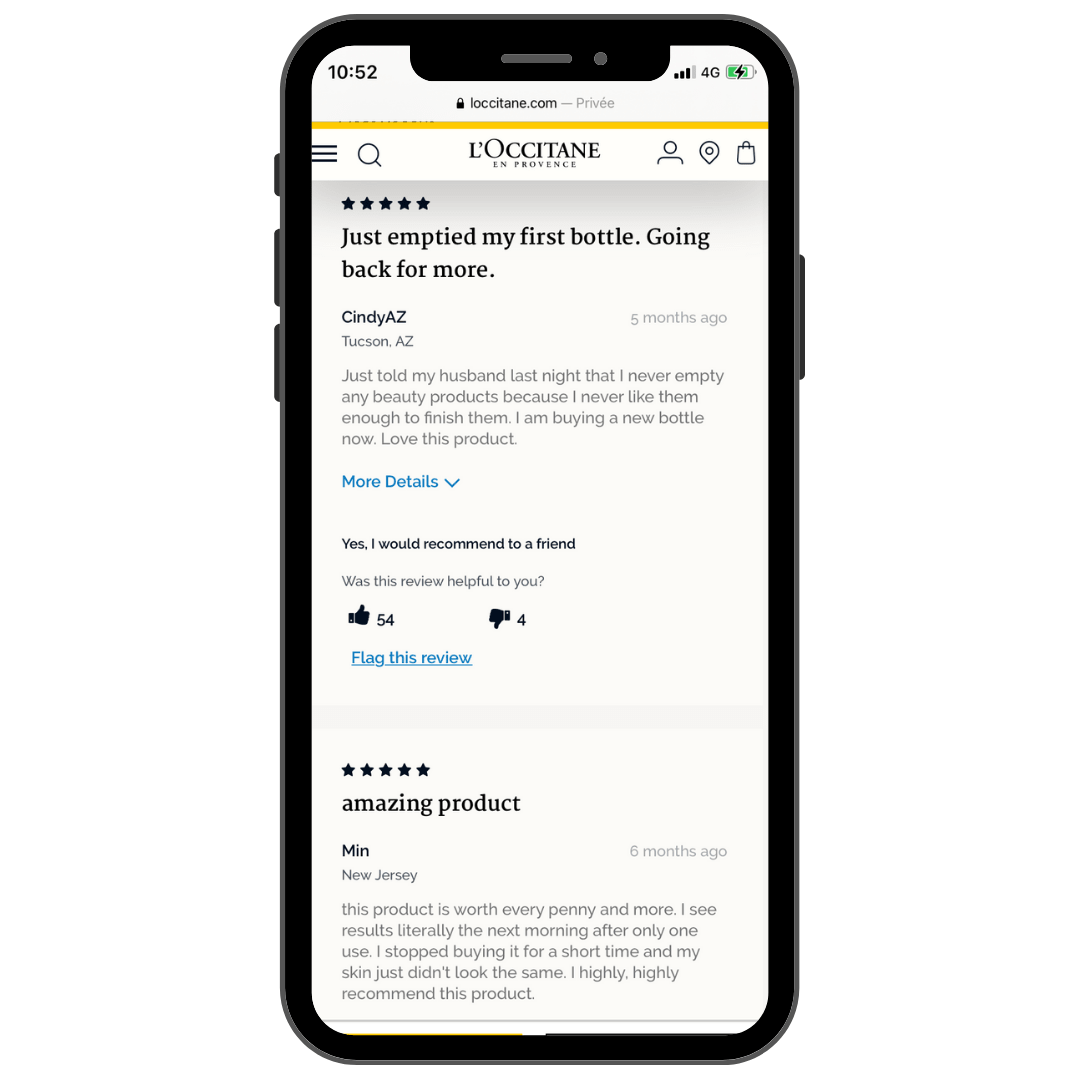In 2021, influencer marketing is an obvious choice for many marketers. Already being used by leading brands, will consumer reviews soon have a similar fate? At SKEEPERS, we are convinced! Both marketing levers capitalize on the same resource: authentic consumer experiences. Each, in its own way, gives the power back to consumers. This is a...
In 2021, influencer marketing is an obvious choice for many marketers. Already being used by leading brands, will consumer reviews soon have a similar fate? At SKEEPERS, we are convinced!
Both marketing levers capitalize on the same resource: authentic consumer experiences. Each, in its own way, gives the power back to consumers. This is a panacea at a time when companies are becoming more and more “customer-centric”.
But what are the particularities of each of these marketing strategies? And why, despite the uncontested advantages of influencers, should online reviews also get your attention? To explore this question, read on.
Media influencer versus consumer citizen?
Unsurprisingly, the main difference between an influencer and consumer review campaigns lies in their actors.
Two types of protagonists: content creators and consumers
- As everyone knows, influencer marketing is based on influencers. A well-known character, the content creator is a media person. He federates and animates an audience on his social networks, shares his life moments and his favorites with his followers, and follows his own editorial line. His little extra? He interacts with his followers on a daily basis and maintains a relationship of trust and proximity with them. Brands collaborate with this person in order to benefit from his or her power of a prescription, a good sounding board, and quality content.
- Consumer reviews campaigns are based on… consumers. They serve the community by adopting (or not) a brand. The individuals solicited during online opinion campaigns can be clients of the company or curious consumers, invited to test its products or services for free in exchange for their honest and sincere testimony. In concrete terms, the panelists post their notes and “augmented” comments (videos, audio recordings, or expanded texts) on different sites. In this way, they feed the “customer reviews” sections of e-commerce stores, marketplaces, and rating platforms (Google reviews, Facebook reviews, App Store, etc.). The brands run consumer review campaigns in order to enrich their product sheets, improve their referencing and build a reassuring presence on the web.
Nano-influencers, real Swiss Army knives
The border between our two types of protagonists is becoming increasingly porous. A hybrid figure is becoming more and more popular with brands and consumers: the nano-influencer.
As “lambda” individuals, considered particularly authentic, nano-influencers are your best allies for your consumer opinion and influence campaigns. Their strength? They wear two hats:
- As avid social users, they share their recommendations with their small audience (less than 5,000 followers) on social networks. Especially close to their “followers”, they obtain higher engagement and conversion rates than their colleagues with millions of followers.
- Genuine consumers, testify in a legitimate and credible way on online review websites. Their secret weapon? Nano influencers are familiar with content production. They know how to give their opinion in a clear way and can generate “heightened” opinions: comments of more than 200 characters or testimonies in front of the camera, for example. Their feedback is useful for other consumers, but also reachable and digestible. They, therefore, make excellent testers for your consumer review campaigns.
Evangelization versus reassurance
Consumer opinion and influencer campaigns do not have the same objectives.
Influencers evangelize their community
Influencers play a decisive role during the first steps of the buying process (even if their role doesn’t stop there). As true early adopters, they test new products before anyone else, make their followers discover them and make consumers aware of their use. In short, they evangelize their followers.
Consumer reviews are an element of reassurance
Prospects refer to online reviews to confirm (or deny) their purchase decision. According to a survey conducted by SKEEPERS Influencer Marketing in 2021, 82% of Internet users consult between 1 and 10 testimonials before purchasing an item or subscribing to a service. Thanks to consumer reviews, future buyers can measure the quality of products and project themselves into their use. The opinions of former customers and/or testers are therefore an essential element of reassurance that boosts sales, achieves the objectives, and allows the brand to differentiate itself.
Two complementary marketing strategies

78% of individuals surveyed said they consulted online reviews after seeing a product presented by a content creator. So, in fact, influencer and consumer review campaigns are complementary and reinforce each other. Influencers raise awareness in their community. On the other hand, customer testimonials support individuals in their purchase decision and increase conversion rates.
Different practices
Consumer reviews and influencer marketing campaigns share some common characteristics, including:
- Selecting and activating a cohort of consumer or content creator partners.
- Sending products or making the service available for testing.
- Keeping consumers or content creators loyal and reactivating these brand ambassadors over the course of campaigns.
However, the process of an influencer campaign and that of a consumer review campaign are different. Some points should particularly attract your attention:
The number of Internet users solicited
A successful influencer marketing campaign can be based on a mega-influencer or a few micro-influencers. For example, during its #Gardonslesourire campaign, the design company Pylones reached 181,500 people and generated 7,000 likes with only 29 micro-influencer partners. For its part, during its #Reseteyes operation, the cosmetics brand L’Occitane en Provence reached 351,500 internet users and obtained 6,800 “likes” on Instagram with 14 publications only.
On the other hand, to be effective, a consumer review campaign must collect at least 50 testimonials and even 150 for a product launch. To reassure potential buyers and fully play their role of social proof, customer feedback must be numerous and diversified enough.
The rhythm of campaigns is not the same
Influencer marketing campaigns follow, at a minimum, the calendar of the commercial year (Black Friday, New Year’s Eve, Valentine’s Day, Mother’s Day…, etc.). The objective for the brand: to remain present in the minds of consumers and to activate them punctually.
For their part, consumer opinion campaigns are renewed on a cyclical basis, ideally every three months. To be useful to potential buyers and remain convincing, testimonials posted on e-shops, retailer websites and other rating platforms must be sufficiently recent.
Different, but complementary, influencer and consumer review campaigns are two essential digital marketing levers. Still under-exploited, the second one needs to be explored urgently. It’s impossible to miss this opportunity when you know that 79% of consumers trust online reviews as much as recommendations from their friends and family!
SKEEPERS helps you find nano influencers and launch your consumer review campaigns in just a few clicks. It’s a simple way to increase your visibility, improve your brand image and boost your sales.
Sources: Influencer Marketing Hub








